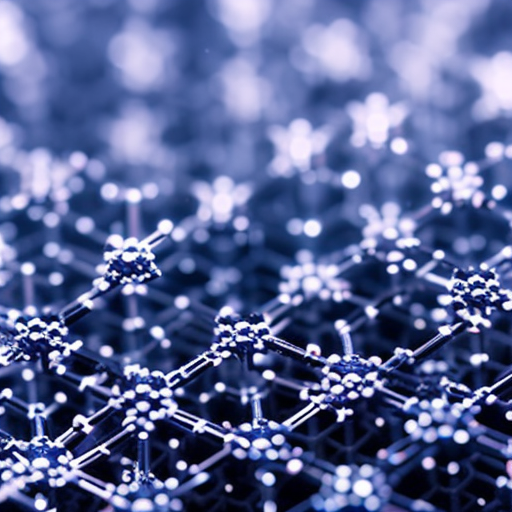Summary:
Supramolecular chemistry is a branch of chemistry that focuses on the study of non-covalent interactions between molecules and the formation of complex structures. It explores the principles of self-assembly, molecular recognition, and the design of functional materials. This field has applications in various areas, including drug delivery, materials science, and nanotechnology.
Introduction:
Supramolecular chemistry is a field that investigates the interactions between molecules and the formation of complex structures through non-covalent bonds. Unlike traditional chemistry, which focuses on the covalent bonds that hold atoms together within molecules, supramolecular chemistry examines the weak interactions between molecules, such as hydrogen bonding, van der Waals forces, and π-π stacking.
Self-Assembly:
One of the key concepts in supramolecular chemistry is self-assembly, which refers to the spontaneous organization of molecules into well-defined structures without external intervention. Self-assembly occurs due to the complementary interactions between molecules, such as host-guest interactions, where a host molecule selectively binds to a guest molecule. This process can lead to the formation of supramolecular architectures, such as capsules, cages, and helical structures.
Molecular Recognition:
Molecular recognition is another important aspect of supramolecular chemistry. It involves the selective binding of molecules based on their complementary shapes, sizes, and functional groups. This recognition process is crucial for biological systems, as it enables enzymes to bind to specific substrates and antibodies to recognize foreign molecules. In supramolecular chemistry, molecular recognition is used to design receptors that can selectively bind to target molecules, which has applications in drug delivery and sensing.
Functional Materials:
Supramolecular chemistry also plays a significant role in the design and synthesis of functional materials. By incorporating supramolecular interactions into the structure of materials, scientists can create materials with unique properties and functions. For example, self-healing materials can be developed by incorporating reversible supramolecular bonds, allowing the material to repair itself when damaged. Supramolecular polymers, which are formed through non-covalent interactions, offer advantages such as tunable properties and stimuli-responsive behavior.
Applications:
Supramolecular chemistry has a wide range of applications in various fields. In drug delivery, supramolecular systems can be used to encapsulate drugs and deliver them to specific targets in the body. The self-assembly of supramolecular structures can also be utilized in the development of nanomaterials for applications in electronics, catalysis, and energy storage. Additionally, supramolecular chemistry has implications in the field of nanotechnology, where it can be used to create nanoscale devices and sensors.
Conclusion:
Supramolecular chemistry is a fascinating field that explores the interactions between molecules and the formation of complex structures through non-covalent bonds. It encompasses concepts such as self-assembly, molecular recognition, and the design of functional materials. The applications of supramolecular chemistry are vast, ranging from drug delivery to nanotechnology. By understanding and harnessing the principles of supramolecular chemistry, scientists can create novel materials and systems with unique properties and functions.












